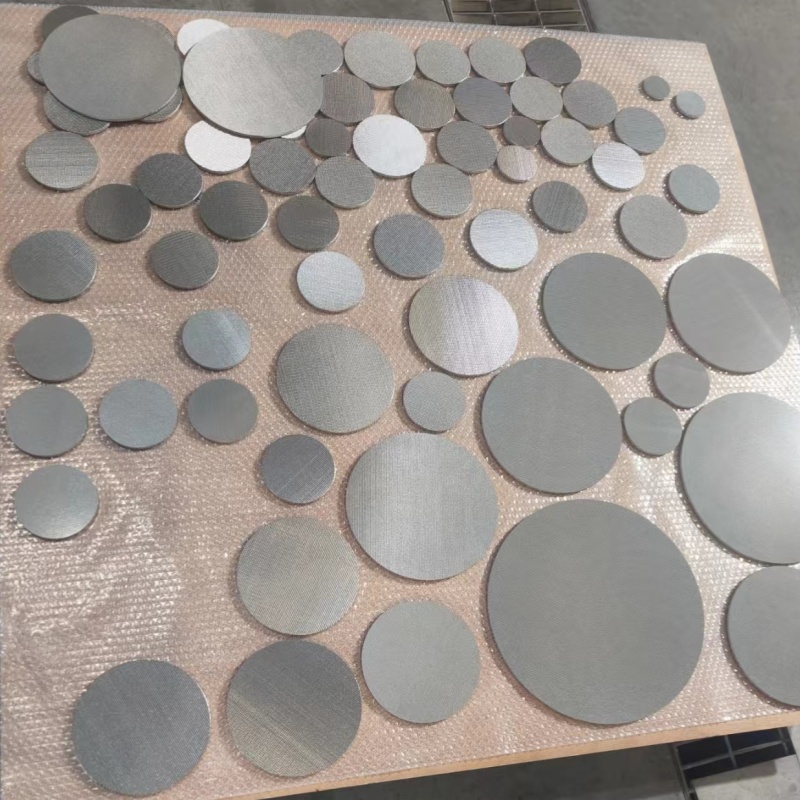Sintered wire mesh plate also be named sieve plates, it widely used in chromatographic to help Capturing particles to reducing loss.The main role of sieve plates on chromatographic column equipment is to improve the efficiency of analysis or preparation by separating and purifying substances. The design and material selection of sieve plate are very important to improve the mass transfer efficiency and separation effect .
The mechanism of action of sieve plate in chromatographic column includes the following aspects:
separation and purification: Sieve plate through physical barrier and chemical action, so that the different components of the mixture are distributed on different sieve plates, so as to achieve initial separation.
Mass transfer enhancement: the design and aperture size of the sieve plate directly affect the mass transfer efficiency, reasonable sieve plate design and material selection can significantly improve the mass transfer effect.
Improve the separation effect: the separation effect and economy of chromatographic column can be improved by adjusting the number and spacing of sieve plates and optimizing the feeding and discharging methods.
Chromatographic column sieve plate is an accessory for chromatographic columns, usually made of stainless steel or polymer. It has many small holes or screens that allow solvents and solutes to pass through while preventing sample particles or impurities from entering the chromatograph
The main function of the sieve plate of the chromatographic column is to protect the packing of the chromatographic column from the contamination of large particles in the sample. These impurities may clog the filler and affect the performance and life of the chromatographic column. These impurities can be effectively filtered out by the use of chromatographic column sieve plates, ensuring that only small particles of the sample enter the chromatographic column through the sieve plate. In addition, the chromatographic column sieve plate can be used to control the flow rate of the sample in the chromatographic column. By adjusting the pore size and thickness of the sieve plate, the flow rate of the sample can be changed to better control the separation effect of the chromatography process
The sieve plate of chromatographic column is an important part of chromatographic column, which can protect chromatographic column, control the separation effect and improve the efficiency and stability of high-level chromatographic process.
The type of chromatographic column is mainly based on its material and application. The following are some common chromatographic column types: Stainless steel chromatographic column: Stainless steel is a common chromatographic column material, which has corrosion resistance, high strength and resistance to 1. Features long service life.
We are a professional manufacturer of sieve plates, looking for us is the first step to success, next, let us choose the appropriate filter interception material together, effectively help you save the loss of media.
Post time: Oct-16-2024

